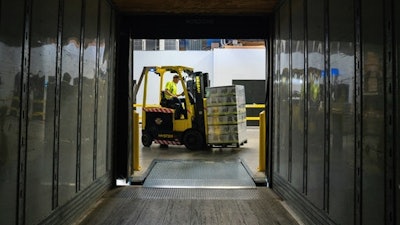
With an ever-expanding U.S. population, the demand for goods has never been higher. Neither has the number of commercial freight trucks carrying highly valuable loads on America’s roads. This has brought its own set of problems, the worst of which is cargo theft by organized criminal gangs. In the first quarter of 2019 alone, losses from cargo theft were $12.8 million, with 140 incidents reported across the United States and Canada. Global transportation service providers (TSPs) can leverage supply chain visibility solutions to provide real-time operational and risk intelligence. Yet, only 6% of 623 supply chain professionals across 17 countries think they have adequate supply chain visibility, and of those respondents, 70% consider their supply chains as either very or extremely complex.
End-to-end visibility into your supply chain is more critical now than ever before and goes beyond the methods that have been effective in the past. The changing economics of manufacturing, inventory and shipping require new technologies that close visibility gaps to mitigate risk, achieve competitive advantages and increase profitability. To survive, companies must provide insight and analytical analysis of their processes and deliver real-time information about in-transit shipments regardless of size or distance.
The changing economics of shipping
Millions of dollars of commercial goods and supplies are shipped on rail cars, trucks, planes, ships and other transportation modes every day. Changes in consumer demand, the nature of products, the economics of production and the economics of the supply chain have led to a fundamental shift in the way companies do business. While supply chains have always been somewhat vulnerable, carriers now must contend with a marketplace that demands specialized services like same-day shipping, which often involve smaller shipments and shorter distances, making cargo even more prone to theft and lost visibility.
For cargo thieves, these blind spots are inviting targets that are easy to attack. The problem of cargo theft has had a debilitating effect on the industry’s operations, with hijackers becoming more organized and tech-savvy, leading to losses of over $15 billion every year within the U.S. freight market. It’s safe to say that the challenge of cargo theft, combined with a general lack of transparency across global supply chains, leads to cargo chaos.
Filling in the gaps: The challenges
One of the most considerable challenges global TSPs face is that cargo theft can essentially be invisible no matter where or when it happens. Even if it’s taking place in broad daylight and right under people’s noses, chances are good they might not even notice. Cargo is most vulnerable in unsecured parking locations when transported by public roads and during any delay from the time it takes to get from one point to another.
Cargo theft can occur at any point in the supply chain, but it is more likely when there is no visibility into the product’s location in transit. The most significant risk comes at unsecured parking locations, which leave both the driver and load an easy target. The second biggest threat comes when driving, as a vehicle may be hijacked, stopped by fake police or sent to a fake warehouse. And, lastly any delay along the shipment route, whether for road delays or transfers of cargo from one shipping provider to another, can significantly increase the risk for theft. The good news is that the right telematics and related technologies can help maintain powerful visibility and control over even the most complex global supply chain networks.
The solution: Smarter shipments
To fill these visibility gaps, two important new technologies have emerged -- fleet management and supply chain visibility solution. Supply chain visibility technology and fleet management systems have countless benefits in securing shipments. Smart sensors and telematics devices enable geospatial pairing between a pallet or parcel and a shipping container or vehicle to ensure the cargo’s safety while in transit, providing fleet and supply chain managers with an additional layer of protection against theft.
Real-time tracking is another prominent feature. The ability to monitor a company truck’s location on-demand has significant benefits; should the worst happen and a thief gets away with one of the company vehicles, a fleet manager can access the fleet management and supply chain visibility software, locate the vehicle and inform the police for a quick recovery. Alternatively, alert parameters can be defined to notify supply chain managers when a shipment strays from its expected path, goes out of the required range or dwells too long in one location. Such an end-to-end visibility solution will virtually render it impossible for thieves to hijack freight by targeting weak links and blind spots within a supply chain.
While there is no magic bullet to eradicate cargo theft completely, technology can improve defenses. The key benefit behind smart technology is always-on, real-time data about the shipment, its environment and the location without interruption. It’s a win-win for supply chain optimization.



















